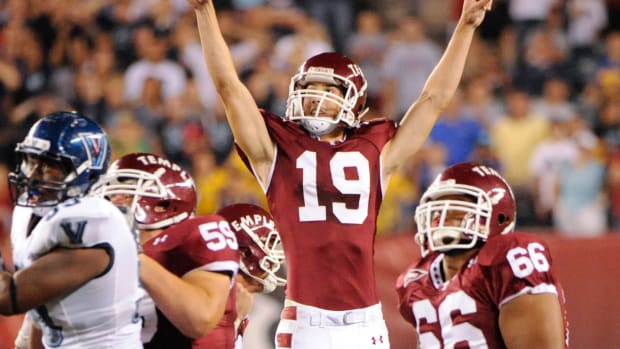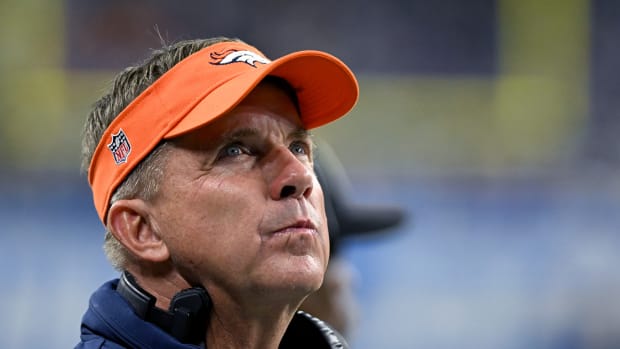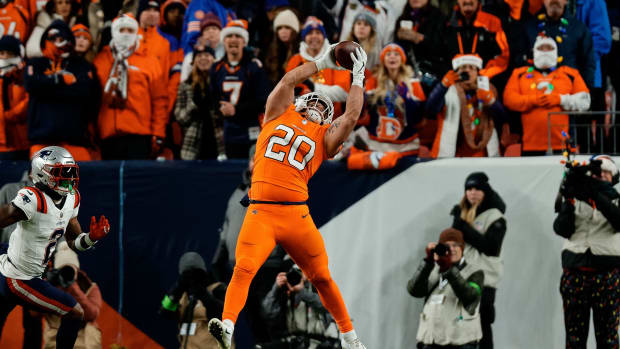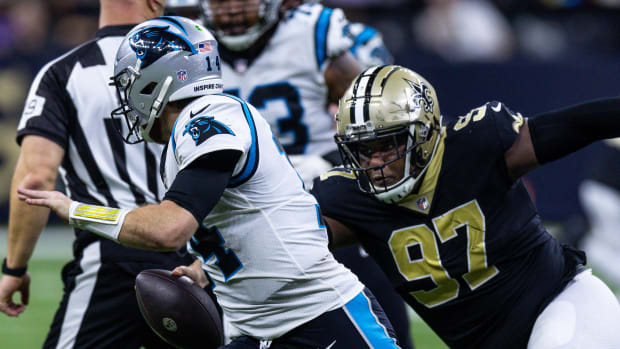Here's Where Broncos are Falling Short Compared to Other Shanahan WCO Variants
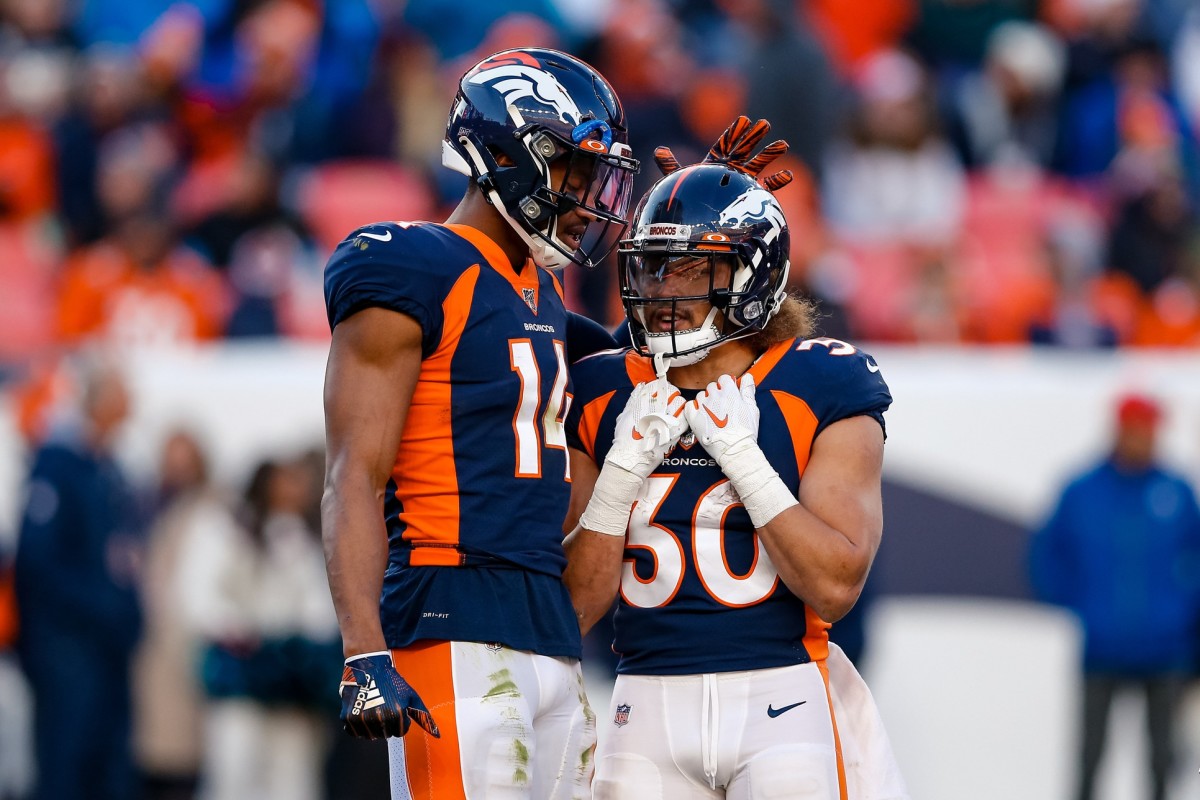
Courtland Sutton has arrived.
In his second year in the NFL out of SMU, the 2018 second-rounder has developed into an absolute beast for the Denver Broncos. Despite the carousel of quarterbacks and issues in the Broncos’ pass blocking and lack of receiving weapons, Sutton has amassed 63 receptions on 106 targets, 58.9% of the team’s total target share, for 1,019 yards, and six touchdowns.
The stats are rather gaudy, especially when considering the issues surrounding his play. To further hammer home just how good Sutton has been for the Broncos in 2019 despite lack of ‘help’, he's been graded as the ninth-best wide receiver through 14 games according to Pro Football Focus.
With a grade of 84.2, 16.2 yards per reception, 325 yards after catch, and a 112.0 passer rating when targeted, Sutton has quickly developed into a No. 1 wide receiver in the NFL playing the ‘X’ position for a Broncos team desperate for offensive output.
While Sutton has grown into the role of the Broncos’ go-to wide receiver, his ability has not only caught the eye of his coaches and outside analysts, but other teams as well. Ever since the Emmanuel Sanders trade, opposing defenses have begun to allocate more resources in slowing down Sutton.
There are times Sutton wins because he is that talented, but the amount of coverage rolled over to slow him down is as much praise to his play as it is opposing teams not feeling threatened by the Broncos’ other weapons at wide receiver — DaeSean Hamilton and Tim Patrick.
Supporting Cast not Moving the Needle
In the Broncos’ passing offense since the Sanders’ trade, Hamilton has accounted for 17 targets (11.04% target share), six receptions (6.98% reception share), and 61 yards (6.04% of yardage share). Patrick has accounted for 23 targets (14.94% target share), 10 receptions (11.63% reception share), and 156 yards (15.43 yardage share). The two combined don’t match the output of Sutton.
Yes, Sutton is the No. 1 option, but given the attention he is starting to receive, the Broncos must find someone else to step up. Simply put, the receivers around Sutton aren’t doing enough to help the offense.
That might be good news for Denver, considering that the 2020 NFL Draft is likely to feature one of the most anticipated wide receiver classes in recent memory, replete with talent.
Higher Passing Efficiency out of Run-Heavy Sets
With 51.95% of Denver's pass attempts going to wide receivers since Week 11 (post-Sanders trade), the Broncos have targeted the tight end in 25.97% of their pass attempts, with 18.83% going to running backs.
On the season, the Broncos have passed out of 11 personnel (3 WR, 1 RB, 1 TE) sets 63% of the time, 12 personnel (2 WR, 1 RB, 2 TE) 14%, and 21 personnel (2 WR, 2 RB, 1 TE) on 13% of their pass attempts. Should this be the case, though, considering the Broncos have shown a better passer rating out of both 12 personnel?
Throwing out of 12 personnel, the Broncos have a quarterback passer rating of 101.4 with 8.1 yards per attempt. With 21 personnel, Denver has a passer rating of 90.2 with 7.9 yards per attempt, which, compared to 11 personnel's passer rating of 76.8 and 5.9 YPA, is marked difference. As is the case for most teams, when it comes to passing the ball, the Broncos are better when forcing opposing defenses into their base personnel to combat the threat of the run by utilizing more running backs and tight ends in their formations.
Perhaps the issue is personnel itself. As they say, it’s not about the Xs and Os but rather the Jimmys and Joes. While the likes of Hamilton and Patrick aren’t striking fear into opponents' hearts, neither are the Broncos’ current semblance of tight ends and running backs.
Needing Better Production from TEs & RBs
Outside of Noah Fant, who has been very valuable as a pass weapon since Sanders was traded hauling in 14 receptions (16.28% reception share) on 28 targets (16.23% target share) and 248 yards, the combination of Jeff Heuerman, Andrew Beck, Troy Fumagalli at tight end, as well as Phillip Lindsay, Royce Freeman, and Devontae Booker at running back, simply have not gotten it done for the Broncos as receivers.
All of the running backs and tight ends not-named Fant have combined for a grand total 34 receptions (52.33% reception share) on 44 targets (22.08 target share), for 213 yards (21.36 yardage share) since Week 11. Essentially, despite a good number of targets going their way, specifically dump-offs out of the backfield, the tight ends/running backs not named Fant aren’t doing much of anything to help the Broncos' passing attack and have been largely inefficient when utilized.
This is not ideal for the Broncos’ offense ran by coordinator Rich Scangarello, which is an offshoot of the Shanahan West Coast Offense tree. Looking at samples of other Shanahan WCO from around the NFL, just how much does the wide receiver ‘matter’ in terms of passing production?
A Look Around the League
The three best examples of teams utilizing a variation of the Shanahan WCO are the Los Angeles Rams, San Francisco 49ers, and Minnesota Vikings, all of whom paint an interesting picture.
A sharp comparison has emerged in the Shanahan WCO between that of Sean McVay's Rams compared to that of Gary Kubiak's Vikings and Kyle Shanahan's Niners. The Rams, passing out of 11 personnel at an incredible 84% of the time, greatly prefer the usage of three wide receivers whenever possible, only utilizing 12 personnel (2 TE) on just 9% of their passing attempts and incredibly have not recorded a single pass attempt with a fullback on the field this season.
In contrast, the Vikings and Niners greatly vary in their usage of their skill players in the passing game. On passing plays, the Vikings utilize 11 personnel on 21% of their snaps, 12 personnel on 48% of their snaps, and 21 personnel on 18% of their snaps. The Niners have used 11 personnel on 58% of their plays, 12 personnel on 16%, and 21 personnel on 21% of their pass plays.
Further hammering home this juxtaposition, the Niners and Vikings have two of the lowest pass attempts to wide receivers in the NFL this season, with the Niners ranking 4th-to-last with 210 attempts and the Vikings ranking 3rd-to-last with 118 attempts.
The only teams using wide receivers less are the Ravens and the Raiders. However, the Rams love wide receivers, having targeted them the second-most this season for a total of 342 attempts. Despite the lower volume, the Niners (102.8) and Vikings (120.7) are far more efficient in using their wide receivers than the Rams (85.6).
It Comes Down to Talent
As was previously stated, it is indeed about the Jimmys and Joes, and this can be seen when comparing the personnel of the Rams, who have an incredible wide receiver trio in Brandin Cooks, Robert Woods, and Cooper Kupp, the Niners, who have George Kittle and Kyle Juszczyk, and the Vikings, who have two great wideouts in Stefon Diggs and Adam Theilen and two good tight ends in Kyle Rudolph and Irv Smith, Jr.
Each team also features vastly greater receiving threats from the running back position than anything Lindsay, Freeman, or Booker have shown for Denver. All Shanahan WCO teams mentioned are fighting for playoff spots with solid or better offenses, while the Broncos have secured a third consecutive finish below .500 due in large part to another inept offense.
Much will be made this offseason about the Broncos’ need to surround Drew Lock with pass weapons. Given how little to date the likes of Hamilton and Patrick have shown, on top of the mouth-watering talent in the 2020 draft boasts at wide receiver, this isn’t surprising nor unwarranted.
However, make no mistake — this offense needs to get more help from its tight ends (not-named Fant) and running backs in the passing game. There is a reason this team signed Theo Riddick this past summer (though he got hurt and never played) and drafted a tight end in the first round, despite the historical evidence pointing at the massive risk for taking that position that early.
If anything, given that Fant has produced nearly one-quarter of the receiving yards since Sanders was traded, despite only garnering 16% of the passing targets, he should be absolutely peppered with targets over the final two games and going forward, as he is doing the most with the least opportunity to date. The Broncos should add to the wide receiver room this upcoming offseason, as any team should want to do better than what Hamilton and Patrick have shown at WR2 and WR3.
A team can do worse than Heuerman as the Y tight end to Fant’s F (when Heuerman is healthy that is) as well as a trio of Lindsay, Freeman, and Booker. The Broncos shouldn’t simply move on from these players, obviously, but they should be doing more in the passing game.
The Takeaway
If the Broncos are to maximize their passing offense and replicate the offenses of the Vikings and Niners, which is GM John Elway's wont, being more run-centric offenses featuring 12/21 personnel groupings, the team must find more production from their tight ends and running backs through the air.
The play-designs and the space for production is there, but currently the Broncos’ level of talent has not been up to par in terms of schematic demands in this offense.
Follow Nick on Twitter @NickKendellMHH and @MileHighHuddle.


